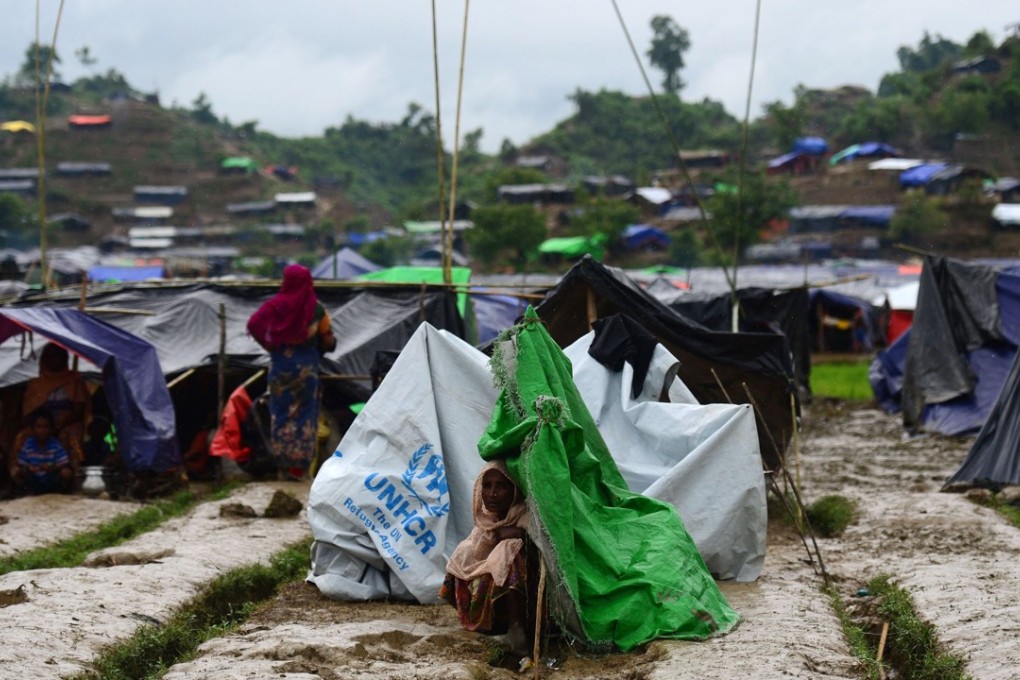Advertisement
‘Those that ran were hacked to death’: Rohingyas relive massacre in Myanmar after fleeing to Bangladesh
Almost 300,000 of the Muslim minority have fled across the border since militants attacked police posts in Rakhine last month
Reading Time:3 minutes
Why you can trust SCMP

Myanmar soldiers barred the entrance to the mosque, men arrived with machetes and petrol cans and then, according to Rohingya Muslim eyewitnesses, the killing began.
“Those that ran were hacked to death. Others that got away were shot by the army,” said Master Kamal, a 53-year-old teacher, and one of the survivors of the massacre in Aung Sit Pyin in Myanmar’s Rakhine state.
“They were burning houses. We fled to save our lives.”
Advertisement
Kamal said he saw three neighbours – including a father and son – butchered as he fled, making a 10-day trek across monsoon-drenched hills, rivers and fields to Bangladesh.
Advertisement

Advertisement
Select Voice
Choose your listening speed
Get through articles 2x faster
1.25x
250 WPM
Slow
Average
Fast
1.25x